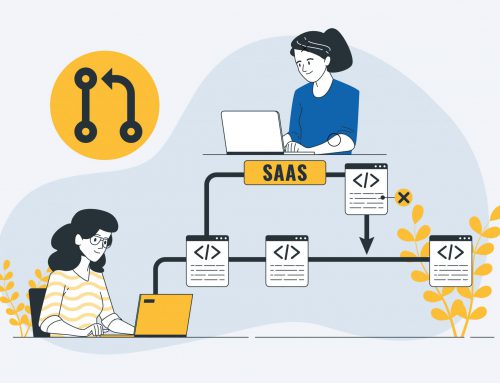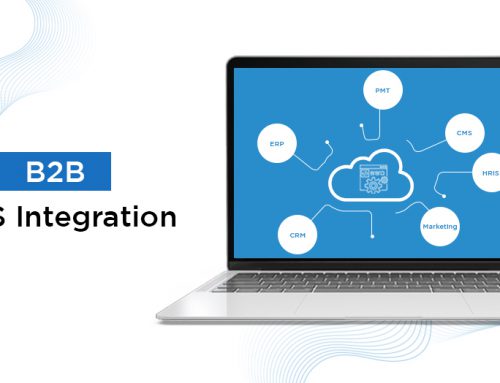Table of Contents
Businesses are increasingly using software solutions to optimize their operations and ensure business continuity in today’s digital landscape, with cost-effective software development topping the priority list in the wake of the post-pandemic. Yet, software development is riddled with complexities and potential pitfalls. In this feature, 13 industry experts, including founders and CTOs, reveal the common challenges in software development and offer actionable strategies to mitigate costs. From emphasizing quality assurance and testing to adopting iterative development approaches, these insights provide a roadmap to success in software development cost management.

Guide To Software Product Development By Experts [eBook]
Get your free copy
- Invest in Quality Assurance and Testing
- Take a Blended Approach to Outsourcing
- Revisions Ripple: The Cost of Iterative Changes
- Hire Qualified Specialists for MVP Projects
- Prevent Scope Creep with Thorough Planning
- Start with a Clear Project Plan
- Save Costs with Pre-Designed Templates
- Broaden Recruiting and Locational Strategy
- Conduct Upfront Technology Assessment
- Upskill Team for Chosen Tech Stack
- Consider Maintenance as a Continuous Cost
- Manage Costs According to Software Size
- Adopt an Iterative-Development Approach

Invest in Quality Assurance and Testing
Many software development projects fail because they didn’t do enough testing. This kind of oversight often leads to problems that cost a lot to fix after the project has been launched and can even threaten its success. A proactive approach to testing is the best way to reduce this risk. At our company, we invest in strong, automatic testing tools and methods from the very beginning of a project.
We strongly believe in testing things all the way through the development process, and we stick to this practice religiously. We’ve been able to create a culture of quality awareness on our team by using best practices for quality assurance in the industry, like test-driven development and regular code reviews. Including both coders and quality assurance experts in the testing process has also always helped us find a wider range of possible problems.
Leonidas Sfyris, CTO, Need A Fixer
Take a Blended Approach to Outsourcing
In the intricate world of software development, especially when working across diverse geographies, one predominant factor affecting costs is the variance in hourly rates and skill sets across these regions. Imagine you’re buying coffee beans. If one region offers premium beans at a higher price, while another offers decent quality at a lesser rate, which do you choose? Do you compromise quality for cost, or vice versa?
To mitigate this, a blended approach is recommended. By leveraging the strengths of each region—say, design expertise from Ukraine, back-end development from India, and quality assurance from Vietnam—both cost and quality can be optimized.
Isn’t it fascinating how diversification, a principle often lauded in investment portfolios, can be so aptly applied here? This method not only hedges against the risk of relying on one region but also ensures that we get the best talent from each, leading to a win-win situation.
Ankit Prakash, Founder, Sprout24
Revisions Ripple: The Cost of Iterative Changes
The software development process often involves a series of iterations, where specific features or components undergo modifications or refinements. It’s not uncommon for projects to see multiple revisions, especially when developers aim for perfection or when the scope changes. Each iteration or revision demands additional hours of work, which naturally inflates the project’s overall costs. From reworking code to reassessing functionalities, and even potential debugging, every tweak can lead to a domino effect of tasks that can stretch the budget.
To manage costs effectively, it’s crucial to have a clear project scope from the outset. Regular communication between stakeholders and developers can help align expectations and reduce the need for extensive revisions. Using iterative development models like Agile can also help by setting clear goals for each phase and obtaining feedback early, thus reducing the chances of major overhauls later on. Setting a predefined limit on revisions, unless absolutely necessary, can also ensure that costs remain in check.
Nirav Oza, CSO & CCO, Ace Infoway
Hire Qualified Specialists for MVP Projects
For a small MVP project, it’s crucial to hire highly qualified specialists who can work quickly without getting overly idealistic. Run-of-the-mill developers might get bogged down by minor details or get stuck on some problems for a long time.
To assess developers’ abilities, it’s better to use test tasks during the recruitment process. As the project grows, you add junior and middle developers to your team. This allows for efficient task distribution based on implementation costs. Senior developers tend to solve very simple tasks not much faster than junior ones, which means that they get more expensive.
At the same time, juniors might take a long time to solve complex tasks, making their overall cost higher than that of senior developers. To manage development effectively, establish a culture of coordination, task distribution, control, and monitoring. This helps in assigning tasks correctly and supporting weaker colleagues, preventing them from getting stuck.
Daria Erina, Managing Director, Linked Helper
Prevent Scope Creep with Thorough Planning
One pivotal factor influencing the cost of software development is “scope creep.” To mitigate this, a well-defined project scope is essential.
Scope creep occurs when additional features or requirements are introduced during the development process, often without proper evaluation. This can lead to increased development time, resource allocation, and ultimately, higher costs.
To address scope creep, we emphasize thorough project planning and requirement analysis before development begins. Establishing a clear and detailed project scope document, with all stakeholders aligned, is crucial.
Additionally, implementing robust change management procedures ensures that any proposed changes are evaluated for their impact on cost and timeline, preventing uncontrolled expansion of the project scope.
Fahd Khan, Director of Marketing and Technology, JetLevel Aviation
Start with a Clear Project Plan
The difficulty of the project is one thing that has a big effect on how much it costs to make software. Costs tend to go up when software projects are more complicated and have a lot of features, connections, and special needs. It’s important to start with a clear, well-defined project plan to avoid this.
Together with your development team, write down the project’s needs and goals, and then rank the features so that you can focus on the most important ones. When it makes sense, use existing tools and platforms as well. This can save time and money on development.
Talk to the development team regularly to monitor their work and make sure that any changes or additions to the project’s scope are dealt with quickly so that it stays within its budget.
Jay Toy, General Manager, 88stacks
Save Costs with Pre-Designed Templates
We can’t deny that custom, intricate designs definitely increase both development time and expenses. This can be tricky to maneuver, given how unique designs give you a competitive advantage, which can make stakeholders hesitant to compromise on this aspect. The best way to navigate this challenge is by using pre-designed templates or frameworks.
For starters, they’re readily available and they not only reduce design costs but also streamline the development process. By building upon established templates, developers can focus more on functionality and customization, ultimately saving time and budget while still achieving the desired functionality and aesthetics.
Ewen Finser, Founder, The Digital Merchant
Broaden Recruiting and Locational Strategy
As in most markets, competition is an enormous factor. If you want to hire talented engineers in Silicon Valley, get in line. These days, there are rural American markets that are much more competitive.
This is not to mention international markets, where most of the best competition lies. It’s important to make sure your recruiting and locational strategy aligns with reasonable budgets for talent. Casting a wider net will tend to work out.
Trevor Ewen, COO, QBench
Conduct Upfront Technology Assessment
The choice of technology stack is a pivotal factor influencing software development costs. Selecting the wrong technology can lead to increased development time and expenses.
To mitigate this, it’s crucial to conduct a comprehensive technology assessment upfront. Consider factors like project requirements, scalability, community support, and the availability of skilled developers. Make informed decisions about which technologies align best with the project’s objectives.
Additionally, maintaining clear communication between the development team and stakeholders throughout the project is essential to identify and address any technology-related challenges early, helping to control costs and ensure successful software development.
Valerio Zanini, Founder, 5D Vision
Upskill Team for Chosen Tech Stack
In my years working in software development, an often-underestimated factor influencing cost is the learning curve associated with unfamiliar technologies or platforms chosen for the project. If a team isn’t well-versed in the chosen tech stack, development can slow, leading to increased costs.
To mitigate this, I advocate for thorough tech stack evaluation before project commencement, ensuring it aligns with the team’s expertise or allocating time for training and upskilling before diving deep into development.
Adil Advani, Digital PR and Marketing Director, AnySoftwareTools
Consider Maintenance as a Continuous Cost
Maintenance isn’t actually a software development cost, but it should be considered with the same priority as other factors. This is because it is a continuous cost that will keep affecting your budget. Hence, you need to decide if maintenance is something you can keep spending on.
Will you have to downsize your project so maintenance costs fall too? These recurring costs can eat up a lot of your budget, so it’s crucial to add it to your expense sheet.
Jessica Shee, Marketing Manager, iBoysoft
Manage Costs According to Software Size
The size of the software is one of the major factors that influence the cost of software development. The size consists of the number of unique pages and screen sizes. Large projects often come with more complexities, which directly impact the cost.
When we talk about a large project, we mean it has over 40 pages and screens. The larger the project, the longer its duration, which requires more effort. Hence, the size of the project matters in determining the cost of software development.
Brandon Rubinshtein, Founder, Howdy
Adopt an Iterative-Development Approach
One significant factor that influences the cost of software development is the project’s scope and complexity. The more features and functionalities you want to include, the higher the cost will be.
To mitigate this, I recommend adopting an iterative-development approach. Start with a Minimum Viable Product (MVP) that includes only the essential features. This allows you to go to market quicker and gather user feedback. Based on real-world data, you can then prioritize additional features, ensuring that you’re investing in elements that genuinely add value to the end-users and your business.
Michael Chen, Head of Growth, Notta
Conclusion:
Navigating the intricacies of software development costs is essential, and to help you on this journey, we’ve gathered insights from a dozen industry experts. They highlight key strategies, from investing in quality assurance and adopting a blended outsourcing approach to hiring specialized talent for MVP projects and preventing scope creep. Emphasizing the importance of a clear project plan, pre-designed templates, and technology assessments, these experts also stress the significance of upskilling teams. An iterative development approach is recommended to manage costs effectively. In conclusion, by addressing these factors, software development expenses can be controlled, ensuring successful projects without breaking the bank.

























